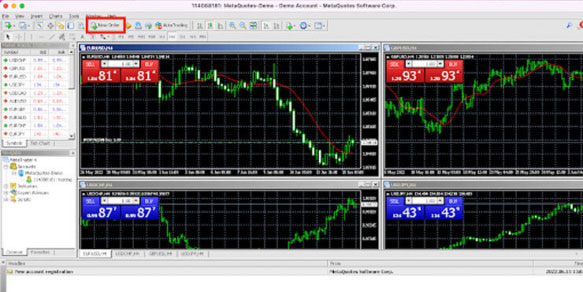Tax-loss harvesting is a strategic investment practice that savvy investors employ to minimize their annual tax liabilities while optimizing their portfolios. By selling securities that have experienced a loss, investors can counterbalance capital gains with capital losses, thereby reducing taxable income. This not only aids in offsetting profits with losses but can also provide an opportunity to reinvest in similar, yet distinct securities, potentially leading to a more robust financial position in the future. However, understanding the nuances of tax-loss harvesting is crucial, as it involves navigating intricacies of tax laws, especially the wash-sale rule, which prevents the repurchase of identical securities within 30 days. For those looking to enhance their investing strategy, mastering tax-loss harvesting could prove to be a significant step toward achieving financial goals, while ensuring compliance with tax regulations.
Understanding Tax-Loss Harvesting

At its core, tax-loss harvesting is an approach used by investors to reduce taxes on capital gains, which are profits from the sale of assets. By deliberately selling investments that have decreased in value, investors can realize these losses and use them to offset gains in their portfolio. This practice is particularly beneficial at the end of the fiscal year, as it allows investors to manage their tax liability more efficiently. However, the realization of tax-loss harvesting transcends mere selling and buying; it requires careful consideration of investment strategy, tax implications, and market timing.
It's important to remember that the primary goal is not to alter one's investment strategy based on tax benefits alone, but rather to strategically rebalance the portfolio while mitigating tax burdens. Investors should be well-acquainted with tax regulations and policies, such as the wash-sale rule, to effectively implement this strategy without inadvertently incurring penalties.
How Tax-Loss Harvesting Fits into an Investment Strategy?
Integrating tax-loss harvesting into an investment strategy can provide substantial benefits beyond immediate tax savings. It encourages disciplined portfolio management by prompting investors to regularly review their holdings and assess performance. This practice helps ensure that underperforming assets are acknowledged and addressed, rather than left to erode overall portfolio value. By systematically harvesting losses, investors can potentially create a more tax-efficient strategy that contributes to long-term wealth accumulation.
Furthermore, by reinvesting the proceeds into different securities, it allows for continued exposure to the market, thereby maintaining the potential for growth. While tax-loss harvesting should not dictate one's entire investment strategy, it serves as a valuable tool in maintaining financial agility, optimizing after-tax returns, and achieving a balanced portfolio over time.
Mechanics of Tax-Loss Harvesting
The mechanics of tax-loss harvesting involve several strategic steps that require careful timing and planning. Initially, an investor must identify assets within their portfolio that have decreased in value and are considered potential candidates for tax-loss harvesting. Once these securities are identified, the investor sells them to realize the losses, which can subsequently be used to offset capital gains elsewhere in the portfolio.
After the sale, the investor has the option to reinvest the proceeds into different, yet similar investments that maintain desired asset allocation and exposure. This step is crucial because it ensures the investor remains invested in the market while adhering to the wash-sale rule, which stipulates that purchasing substantially identical securities within 30 days before or after the sale can disqualify the tax loss.
Moreover, investors need to comprehensively document each transaction involved in the process, as meticulous records are vital for tax purposes. These records not only substantiate claims to the IRS but also assist in future financial planning. By following these deliberate steps, investors effectively utilize tax-loss harvesting as a means to optimize their investment strategies and improve long-term returns.
Benefits of Tax-Loss Harvesting

Tax-loss harvesting offers a myriad of advantages that can significantly enhance an investor's financial strategy, each rooted in the effective management of one's tax obligations and portfolio health.
- Tax Efficiency: One of the primary benefits of tax-loss harvesting is its potential to improve tax efficiency. By strategically realizing losses on underperforming stocks or securities, investors can directly offset capital gains within their portfolios. This action reduces the taxable income derived from those gains, ensuring that investors retain more of their profits.
- Portfolio Rebalancing: Another benefit is the facilitation of regular portfolio rebalancing. Tax-loss harvesting encourages investors to review and evaluate their asset performance consistently. Through this process, investors are more likely to sell lagging assets, allocate capital more effectively, and pursue investments that align better with their financial goals and risk tolerance.
- Risk Management: Tax-loss harvesting indirectly contributes to risk management by prompting the evaluation of asset performance and market conditions. By thoughtfully exiting underperforming positions and reinvesting, investors can mitigate potential risks associated with market downturns while maintaining a strategic asset allocation aimed at achieving their financial objectives.
Potential Pitfalls and Considerations
While tax-loss harvesting presents numerous advantages, investors must remain aware of potential pitfalls and considerations to effectively leverage this strategy.
- Wash-Sale Rule: Perhaps the most critical consideration is adherence to the wash-sale rule. This regulation prohibits claiming a tax loss on a security sale if the same or a "substantially identical" security is purchased within 30 days before or after the sale. Violating this rule can result in the disqualification of the tax deduction and potentially lead to unexpected tax liabilities.
- Market Timing Risks: Attempting to time the market to optimize tax-loss harvesting can be risky. Selling a security based solely on its decreased value might lead to missing a market rebound, potentially resulting in lost gains. Hence, investors should maintain a broader perspective, focusing on their long-term investment objectives rather than short-term market fluctuations.
- Transaction Costs: Frequent transactions due to tax-loss harvesting can incur additional costs such as brokerage fees, which might diminish the net benefit of the strategy. Investors should consider these costs while planning their trades and ensure that the financial benefits outweigh the expenses incurred.
Conclusion
Incorporating tax-loss harvesting into an investment strategy offers a multifaceted approach to enhancing portfolio efficiency and managing tax liabilities. However, investors must be astute, balancing the benefits with potential risks such as the wash-sale rule and market timing pitfalls. By combining strategic tax management with diversified, long-term investment practices, smart investors can significantly improve their financial outcomes. In doing so, they equip themselves to withstand market volatility and achieve enduring financial success.




